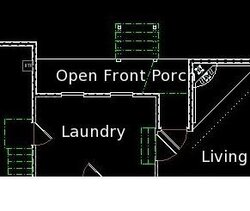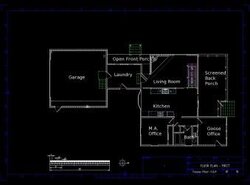mgwmgw
New Member
Here is the situation with respect to the ramp.
Ed estimates that building the ramp from scratch will cost us about $2000 to $3000 for the materials, mostly wood. The rise is about 60 inches which means a ramp of about 60 feet long.
One can rent a ramp. I have not been given numbers yet, because they have to visit and measure and make estimates, but the consensus among those who offer both ramp and lift is that a lift will likely be less expensive than a 60 foot ramp. The break-even point is about 40 foot ramp. However, lifts cannot be rented, only purchased. I have had one company visit thus far, and two more rental companies which I expect to visit soon.
Rented ramps are usually metal. Home-made ramps are usually wood.
Companies that rent ramps typically say if you rent for more than about 6 months, you own the ramp. Rental companies apply either 50 or 75 per cent of the rent to purchase if you want to convert.
Lifts cost about $4000 to $5000. A lift needs a cement pad about 5 foot by 5 foot big. We have mostly flat ground to put that on. We have an outdoor electrical outlet. Transportation of the lift costs about $500. If we used a lift, we would need a short ramp or platform to get over a couple of small steps between where the lift would be and the front door. The ramp would be less than 10 feet long and about 3 feet wide.
Ramps can be purchased on craigslist. They cost about $1200 to $2000. All the ramps I find locally are less than 40 feet long, so we would have to buy more than one. Some are wood. One is metal bought from Amrep, so we could buy the rest of the ramp from Amrep, but then we would have to set it up ourselves, which means digging ground and pouring concrete to put the legs of the ramp on.
Metal ramps are "temporary" which I think means no permits. Wooden ramps are "permanent" which probably requires a permit.
So, given all of that, who has an opinion about what we should do?
I will post rental costs when I have them.
Ed estimates that building the ramp from scratch will cost us about $2000 to $3000 for the materials, mostly wood. The rise is about 60 inches which means a ramp of about 60 feet long.
One can rent a ramp. I have not been given numbers yet, because they have to visit and measure and make estimates, but the consensus among those who offer both ramp and lift is that a lift will likely be less expensive than a 60 foot ramp. The break-even point is about 40 foot ramp. However, lifts cannot be rented, only purchased. I have had one company visit thus far, and two more rental companies which I expect to visit soon.
Rented ramps are usually metal. Home-made ramps are usually wood.
Companies that rent ramps typically say if you rent for more than about 6 months, you own the ramp. Rental companies apply either 50 or 75 per cent of the rent to purchase if you want to convert.
Lifts cost about $4000 to $5000. A lift needs a cement pad about 5 foot by 5 foot big. We have mostly flat ground to put that on. We have an outdoor electrical outlet. Transportation of the lift costs about $500. If we used a lift, we would need a short ramp or platform to get over a couple of small steps between where the lift would be and the front door. The ramp would be less than 10 feet long and about 3 feet wide.
Ramps can be purchased on craigslist. They cost about $1200 to $2000. All the ramps I find locally are less than 40 feet long, so we would have to buy more than one. Some are wood. One is metal bought from Amrep, so we could buy the rest of the ramp from Amrep, but then we would have to set it up ourselves, which means digging ground and pouring concrete to put the legs of the ramp on.
Metal ramps are "temporary" which I think means no permits. Wooden ramps are "permanent" which probably requires a permit.
So, given all of that, who has an opinion about what we should do?
I will post rental costs when I have them.



